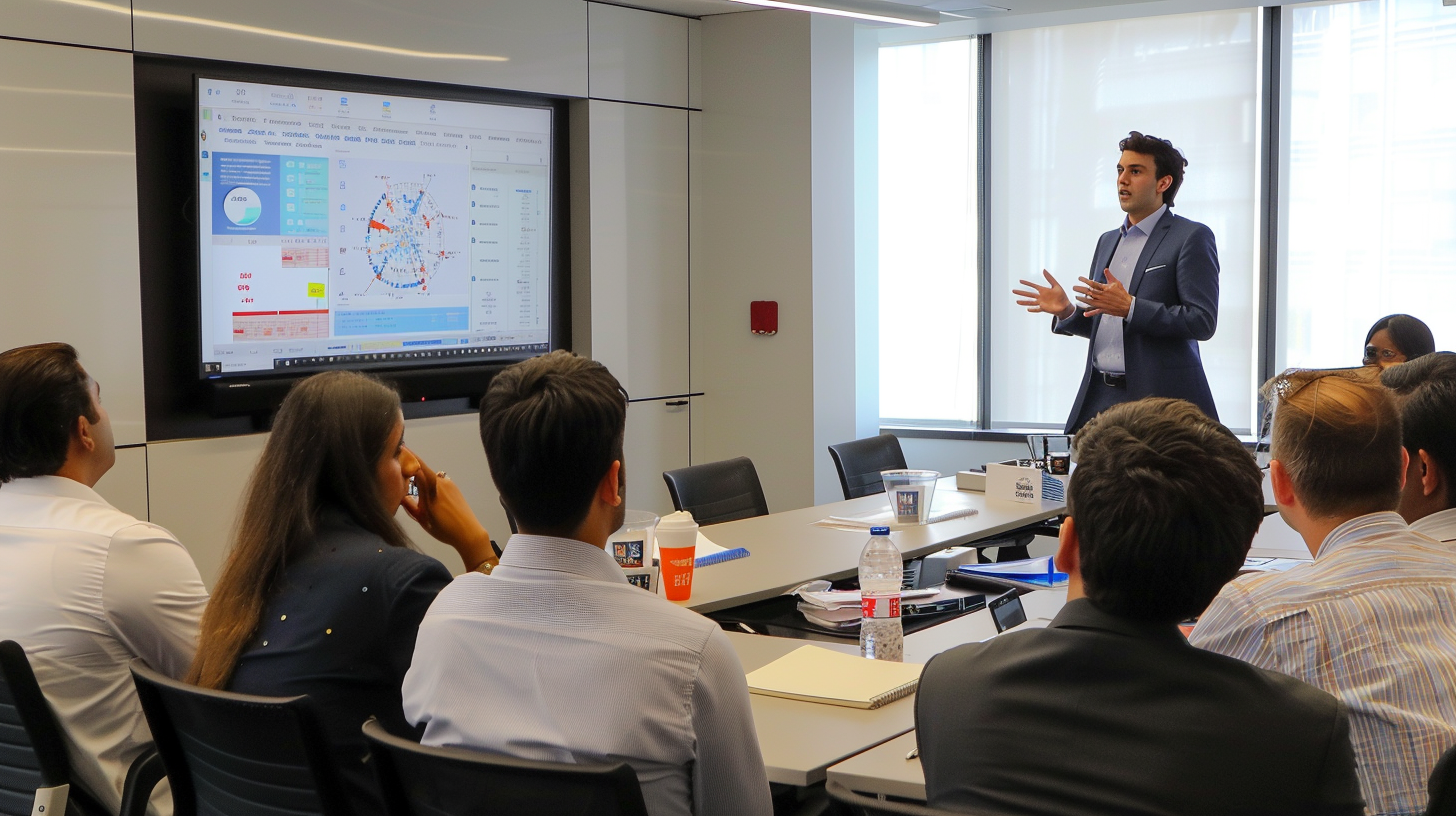Mapping Prime Brokerage documentation and Regulatory Compliance
Written by Loffa Interactive Group on . Posted in news.
The Role of SIA-150/F1SA in Prime Brokerage Compliance
 In the intricate world of prime brokerage, regulatory compliance is not just a mandate—it’s the backbone of trust, efficiency, and integrity in financial services. Amidst the dense regulatory framework governing these operations, the significance of efficiently managing and sending SIA-150/F1SA (Form 1 Schedule A) cannot be overstated. This practice sits at the confluence of various regulations, including NYSE Rule 412 D and NASD Rule 11870 (g)(3), among others. Below we explore the critical role of SIA-150/F1SA documentation in ensuring regulatory compliance, specifically within the context of prime brokerage services.
In the intricate world of prime brokerage, regulatory compliance is not just a mandate—it’s the backbone of trust, efficiency, and integrity in financial services. Amidst the dense regulatory framework governing these operations, the significance of efficiently managing and sending SIA-150/F1SA (Form 1 Schedule A) cannot be overstated. This practice sits at the confluence of various regulations, including NYSE Rule 412 D and NASD Rule 11870 (g)(3), among others. Below we explore the critical role of SIA-150/F1SA documentation in ensuring regulatory compliance, specifically within the context of prime brokerage services.
The Intersection of SIA-150/F1SA with NYSE Rule 412 D and NASD Rule 11870 (g)(3)
NYSE Rule 412 D and NASD Rule 11870 (g)(3) primarily address the swift and accurate transfer of customer accounts between member organizations. These rules are foundational to maintaining fluidity and protecting customer interests during account transfers—a process integral to prime brokerage services.
- NYSE Rule 412 D: This rule facilitates the orderly transfer of accounts between member organizations, underscoring the importance of minimal disruption to customer investment activities.
- NASD Rule 11870 (g)(3): Part of the Automated Customer Account Transfer Service (ACATS), this rule delineates the procedures for transferring accounts and assets between member firms, ensuring a standardized process that safeguards customer assets.
Efficiently sending and managing SIA-150/F1SA documentation streamlines the prime brokerage account transfer process. It ensures transparency and clarity regarding prime brokerage relationships and clearing arrangements, thereby aiding compliance with the above rules.
Broadening the Compliance Horizon
The utility of the SIA-150/F1SA extends beyond facilitating account transfers; it also intersects with other regulatory requirements that, directly or indirectly, affect prime brokerage operations:
- SEC Rule 15c3-3 (Customer Protection Rule) mandates broker-dealers to maintain physical possession or control over customers’ fully paid and excess margin securities. Adequate documentation of prime brokerage arrangements through SIA-150/F1SA forms clarifies the custody and control parameters of customer assets, aligning with this rule’s objective.
- FINRA Rule 4311 (Carrying Agreements) regulates the conditions under which one member firm may carry accounts for another. SIA-150/F1SA forms are pivotal in documenting these arrangements, ensuring all terms are explicitly agreed upon in compliance with FINRA standards.
- Operational and Audit Efficiency: Beyond regulatory adherence, effective management of these documents enhances operational efficiency and ensures audit readiness. It prepares brokerage firms to respond swiftly to regulatory audits, showcasing compliance across various operational standards.
The Prime Brokerage Compliance Ecosystem
 The realm of prime brokerage is governed by a network of regulations designed to safeguard market integrity, protect investor interests, and ensure the stability of financial markets. The role of SIA-150/F1SA in this regulatory ecosystem is multifaceted:
The realm of prime brokerage is governed by a network of regulations designed to safeguard market integrity, protect investor interests, and ensure the stability of financial markets. The role of SIA-150/F1SA in this regulatory ecosystem is multifaceted:
- Compliance and Recordkeeping: Adherence to SEC Rule 17a-4 requires comprehensive recordkeeping, including the management of letters of free funds. This dovetails with Regulation T Section 220.8, ensuring transactions are backed by sufficient funds and comply with cash account regulations.
- Strategic Compliance Planning: Firms must strategize on compliance adherence, leveraging SIA-150/F1SA documentation to navigate the regulatory landscape effectively. This strategic planning is crucial for maintaining operational integrity and fostering client trust.
- Collaborative Regulatory Framework: The compliance requirements underscore the necessity for collaboration between brokers, dealers, and custodians. Ensuring alignment with regulations like NYSE Rule 412 D and NASD Rule 11870 (g)(3) is a collective effort, highlighting the interconnected nature of the financial services ecosystem.
The orchestration of SIA-150/F1SA documentation within prime brokerage operations illuminates the complex web of regulatory compliance that firms navigate daily. This practice is not merely a procedural necessity but a cornerstone of regulatory integrity, operational excellence, and market stability. By understanding and leveraging this documentation in compliance with overarching rules and regulations, prime brokerages can fortify their operations, safeguard their reputations, and uphold the highest standards of investor protection. In the ever-evolving financial landscape, staying abreast of these regulatory mandates is not just strategic—it’s imperative.
Diving deeper into the processing and settlement aspects of the prime brokerage process, especially concerning Forms SIA-150, SIA-151, and F1SA (Form 1 Schedule A), requires a closer examination of the regulatory environment that governs these specific activities. These forms are critical in facilitating the proper agreement and notification processes between prime brokers, executing brokers, and other parties involved. While there might not be a single rule that explicitly mandates these specific forms, their use is deeply integrated into the broader regulatory framework designed to ensure transparency, efficiency, and compliance in prime brokerage operations. The process of sending SIA-150/F1SA (Form 1 Schedule A) as part of the Prime Brokerage arrangement intersects with various regulatory frameworks, including NYSE Rule 412 D and NASD Rule 11870 (g)(3), among others. Understanding how this product and process align with these rules is crucial for brokerage firms to ensure compliance and streamline their operations efficiently. Here’s a breakdown of how it relates to these regulations and what other regulatory requirements it could satisfy. Here’s a more detailed exploration:
1. Prime Brokerage Agreements and Notifications
- Forms SIA-150 and SIA-151 primarily relate to the operational aspects of prime brokerage agreements and the notification system between prime brokers and executing brokers.
Governing Rules and Regulations:
- FINRA Rule 4311 (Carrying Agreements): This rule requires member firms (brokers) that enter into carrying agreements to notify FINRA and receive approval. It encompasses agreements where one member firm clears transactions or carries accounts for another firm. While not directly mentioning SIA-150 or SIA-151, Rule 4311 sets the regulatory foundation for these types of agreements and notifications.
- Action: Prime brokers and executing brokers must ensure that any agreement complies with FINRA Rule 4311, including proper documentation and notification procedures.
- SEC Rule 15c3-1 (Net Capital Rule) and Rule 15c3-3 (Customer Protection Rule): These rules ensure the financial integrity of brokerage firms and the protection of customer assets, indirectly influencing the operational standards and agreements documented by forms like SIA-150 and SIA-151.
- Action: Maintain adequate net capital and ensure the proper segregation of customer assets, documented through comprehensive agreements and notifications.
2. Form 1 Schedule A (F1SA)
- Form F1SA is used within the prime brokerage context to identify the specific accounts a prime broker may trade on behalf of, ensuring compliance with various regulations regarding authorization and account management.
 Governing Rules and Regulations:
Governing Rules and Regulations:
- FINRA Rules & SEC Regulations: While there’s no single rule explicitly mandating Form F1SA, its use is integral to complying with broader SEC and FINRA regulations that govern account management, authorization, and the fiduciary responsibilities of brokers.
- Action: Use Form F1SA to document authorization details comprehensively, ensuring compliance with the regulatory framework governing account management and trading authorization.
Cross-Regulatory Considerations for Processing and Settlement:
- Regulation T (Federal Reserve Board): Governs the extension of credit by brokers to customers, indirectly affecting how prime brokerage arrangements manage credit, margin requirements, and settlement procedures.
- Action: Adhere to Regulation T requirements in managing credit extensions and ensuring timely settlement of transactions.
- SEC Rule 17a-4 & 17Ad-22 (Clearing Agency Standards): These rules, among others, govern recordkeeping and operational standards for clearing agencies, affecting how prime brokers and their counterparts manage settlement and clearing processes.
- Action: Implement robust recordkeeping systems and ensure compliance with operational standards set forth for clearing agencies.
- NYSE Rule 412(D) and NASD Rule 11870 (g)(3) both deal with customer account transfers, ensuring that such transfers are executed promptly and accurately to minimize impact on the customer’s investment activities. Specifically:
- NYSE Rule 412(D) relates to the transfer of customer accounts between member organizations, emphasizing the timely and orderly transfer of accounts to protect customer interests.
- NASD Rule 11870 (g)(3) focuses on customer account transfers within the context of the Automated Customer Account Transfer Service (ACATS), detailing the procedures for transferring accounts and associated assets between member firms.
When brokerage firms utilize a product that facilitates the sending of SIA-150/F1SA (Form 1 Schedule A), it can directly impact the efficiency and compliance of prime brokerage services, especially in the context of account transfers. This documentation is vital for establishing and communicating the prime brokerage relationships and the specifics of clearing arrangements. Efficient management and transmission of these forms can ensure that all parties involved (the executing broker, the prime broker, and other relevant entities) have a clear understanding of the account’s status, facilitating a smoother transfer process in accordance with the aforementioned NYSE and NASD rules.
- SEC Rule 15c3-3 (Customer Protection Rule): This rule requires that broker-dealers promptly obtain and thereafter maintain physical possession or control over customers’ fully paid and excess margin securities. Proper documentation and communication of prime brokerage arrangements through SIA-150/F1SA can help ensure that the custody and control of customer assets are clearly defined, supporting compliance with this rule.
- FINRA Rule 4311 (Carrying Agreements): This rule governs the terms and conditions under which one member firm may carry accounts for another. The SIA-150/F1SA documentation plays a critical role in outlining these arrangements, especially in prime brokerage contexts, ensuring that all terms are explicitly agreed upon and documented in accordance with FINRA requirements.
- Operational and Audit Efficiency: Beyond regulatory compliance, efficient handling of these documents also supports operational efficiency and audit readiness. It ensures that brokerage firms can quickly produce necessary documentation in response to regulatory inquiries or audits, demonstrating compliance with various operational standards and practices required by the SEC and other regulatory bodies.
Conclusion and Strategic Implementation:
 To navigate the intricate regulatory landscape governing processing and settlement in prime brokerage, firms should:
To navigate the intricate regulatory landscape governing processing and settlement in prime brokerage, firms should:
- Implement Comprehensive Compliance Management Systems: Utilize advanced software solutions that can track regulatory changes, manage documentation (including Forms SIA-150, SIA-151, F1SA), and ensure compliance across all operations.
- Engage in Continuous Training and Education: Regularly update training programs for staff to include the latest regulatory requirements and best practices for processing and settlement.
- Collaborate with Regulators and Industry Groups: Participate in forums and working groups to stay ahead of regulatory changes and contribute to the development of industry standards.
Mapping the regulations related to each step of the prime brokerage process reveals a complex web of interrelated rules that guide the industry. By understanding and addressing each regulatory requirement, prime brokers and their counterparts can ensure efficient, compliant operations while safeguarding the interests of all stakeholders involved in the trading process.


 SEC Rule 17a-4 outlines the recordkeeping and preservation obligations of broker-dealers under the Securities Exchange Act of 1934. This rule mandates that broker-dealers retain records of all communications that relate to their “business as such.” Among various other records, this includes communications related to verifying the availability of funds or securities before transactions.
SEC Rule 17a-4 outlines the recordkeeping and preservation obligations of broker-dealers under the Securities Exchange Act of 1934. This rule mandates that broker-dealers retain records of all communications that relate to their “business as such.” Among various other records, this includes communications related to verifying the availability of funds or securities before transactions. The stringent recordkeeping and preservation requirements of SEC Rule 17a-4 are designed to protect investors and maintain the integrity of the securities market. By ensuring that broker-dealers maintain comprehensive, accessible, and tamper-evident records, the rule aids in the prevention and detection of fraudulent activities and compliance violations. It also ensures that broker-dealers can substantiate their business operations and decisions, thereby promoting accountability and transparency in their dealings with clients and regulators.
The stringent recordkeeping and preservation requirements of SEC Rule 17a-4 are designed to protect investors and maintain the integrity of the securities market. By ensuring that broker-dealers maintain comprehensive, accessible, and tamper-evident records, the rule aids in the prevention and detection of fraudulent activities and compliance violations. It also ensures that broker-dealers can substantiate their business operations and decisions, thereby promoting accountability and transparency in their dealings with clients and regulators.

 Moreover, the financial sector often grapples with scenarios that demand ethical considerations and judgment calls beyond mere legal compliance. Human professionals contribute a moral compass and the foresight to assess the broader impact of decisions on stakeholders, reputation, and market integrity. Their ethical sensibility, refined through years of experience, guides firms through moral dilemmas, where the right path is not always clear. This ability to navigate ethical complexities underscores the critical role of human judgment in maintaining the sector’s integrity and trustworthiness.
Moreover, the financial sector often grapples with scenarios that demand ethical considerations and judgment calls beyond mere legal compliance. Human professionals contribute a moral compass and the foresight to assess the broader impact of decisions on stakeholders, reputation, and market integrity. Their ethical sensibility, refined through years of experience, guides firms through moral dilemmas, where the right path is not always clear. This ability to navigate ethical complexities underscores the critical role of human judgment in maintaining the sector’s integrity and trustworthiness. Strategic workforce optimization in the context of brokerage firms entails a dual approach:
Strategic workforce optimization in the context of brokerage firms entails a dual approach: Building a compliance-ready workforce in the brokerage sector is an ongoing process that blends continuous education, tailored training, automation for knowledge sharing, a strong compliance culture, and feedback loops for continuous improvement. By investing in these areas, firms not only enhance their compliance posture but also empower their employees and automated systems to work in concert towards a common goal: maintaining rigorous adherence to SEC regulations and ensuring preparedness for any audit scenario. This holistic approach to workforce optimization ensures that brokerage firms can navigate the complexities of the financial landscape with confidence and integrity.
Building a compliance-ready workforce in the brokerage sector is an ongoing process that blends continuous education, tailored training, automation for knowledge sharing, a strong compliance culture, and feedback loops for continuous improvement. By investing in these areas, firms not only enhance their compliance posture but also empower their employees and automated systems to work in concert towards a common goal: maintaining rigorous adherence to SEC regulations and ensuring preparedness for any audit scenario. This holistic approach to workforce optimization ensures that brokerage firms can navigate the complexities of the financial landscape with confidence and integrity.